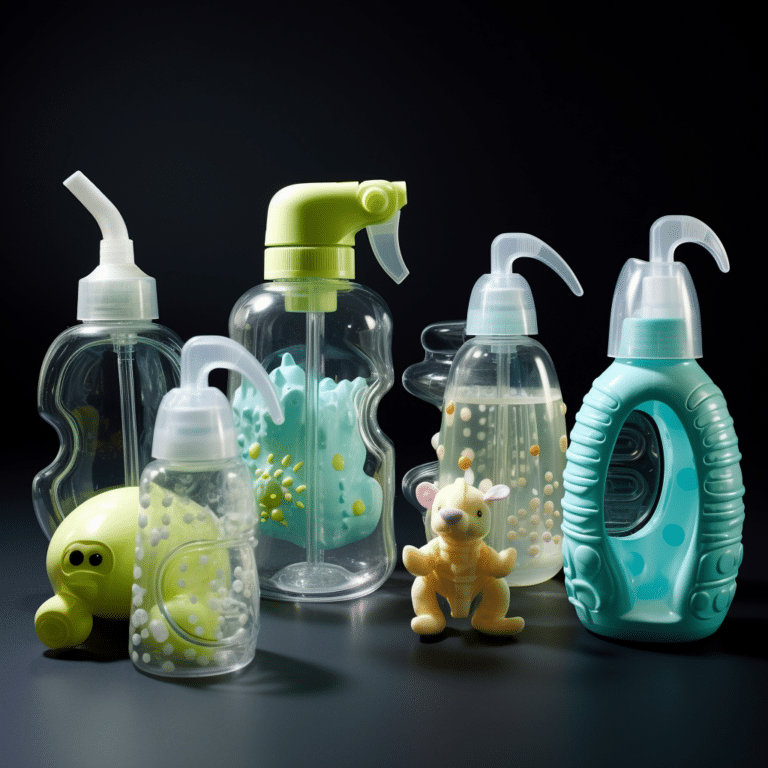Co-Sleeping and Breastfeeding: Benefits, Risks, and Guidelines
Co-sleeping with your baby has pros and cons concerning breastfeeding. This article examines the link between co-sleeping safety and breastfeeding benefits, covering associated risks and rewards, and offering infant sleep safety tips.
Key Takeaways:
- Co-sleeping can promote frequent breastfeeding and enhance bonding between mother and baby.
- Breastfeeding provides optimal nutrition for babies and reduces the risk of various illnesses and diseases.
- Creating a safe sleep environment is crucial to minimize the potential risks of co-sleeping.
- Following guidelines for safe co-sleeping practices, such as using a firm mattress and avoiding loose bedding, is essential.
- Consulting with healthcare professionals can provide personalized guidance and support.
The Benefits of Breastfeeding for Babies and Mothers
Breastfeeding provides numerous benefits for infants and mothers, offering ideal nutrition and immune protection. It supplies essential nutrients for babies’ growth and development, with a perfect mix of easily digestible proteins, fats, and carbs to foster growth and reduce digestive problems.
Breastfeeding not only offers ideal nutrition but also shields infants from various health issues by enhancing their immune system, lowering infection risks, and reducing the chances of conditions like asthma, obesity, type 1 diabetes, and SIDS. It also fosters a strong emotional bond between mother and baby, benefiting both.
Optimal Nutrition
Breastfeeding benefits mothers by reducing cancer risks, promoting post-childbirth recovery, and aligning with the American Academy of Pediatrics’ recommendation for optimal health benefits for both mother and baby.
| Benefits for Babies | Benefits for Mothers |
|---|---|
| Optimal nutrition and growth support | Reduced risk of breast and ovarian cancers |
| Antibodies and immune system boost | Lower risk of type 2 diabetes and high blood pressure |
| Lower risk of asthma, obesity, and type 1 diabetes | Promotes postpartum recovery and weight loss |
| Protection against SIDS, ear infections, and stomach bugs | Enhances emotional bonding with baby |
Conclusion
In conclusion, breastfeeding offers numerous benefits for both babies and mothers. It provides optimal nutrition, immune system support, and protection against various health conditions for infants. For mothers, breastfeeding helps reduce the risk of certain cancers and promotes postpartum recovery. It is important to consult with a healthcare professional to ensure the best choice for both the baby and the mother. By recognizing the advantages of breastfeeding and seeking support and guidance, mothers can make informed decisions that prioritize the well-being of their child.
Understanding Co-sleeping and Safe Sleep Environment
Co-sleeping refers to the practice of sharing a sleeping surface with your baby, which requires careful attention to creating a safe sleep environment. While co-sleeping can have its potential advantages, it is important to be aware of the risks and take necessary precautions to ensure the well-being of your baby.
Creating a safe sleep environment involves several key considerations. The American Academy of Pediatrics recommends the following guidelines for safe co-sleeping practices:
- Use a firm and flat mattress to prevent suffocation and ensure proper support for your baby’s developing body.
- Avoid loose bedding, pillows, and soft sleep surfaces that can pose a suffocation risk or increase the chances of accidental injury.
- Practice safe positioning by placing your baby on their back to sleep, as this reduces the risk of Sudden Infant Death Syndrome (SIDS).
- Keep your baby warm without overheating by dressing them in appropriate clothing and using a lightweight blanket if necessary.
By following these guidelines, you can minimize the risk of co-sleeping accidents and create a safe sleep environment for your baby.
The Importance of a Safe Sleep Environment
“Creating a safe sleep environment is crucial to reduce the risk of co-sleeping accidents and ensure the well-being of your baby.”
It is important to recognize that co-sleeping may not be suitable for all families or in certain situations. Factors such as maternal smoking, alcohol or drug use, and certain medical conditions can increase the risks associated with co-sleeping. It is crucial to be aware of these contraindications and take necessary precautions to reduce the risk of co-sleeping accidents.
Ultimately, finding the right balance between the benefits of breastfeeding and the safety considerations of co-sleeping is essential. By creating a safe sleep environment, seeking professional advice, and making informed decisions, you can provide a nurturing and secure space for your baby’s sleep while ensuring their overall well-being.
| Key Points: |
|---|
| Co-sleeping requires careful attention to creating a safe sleep environment for your baby. |
| Follow the guidelines provided by the American Academy of Pediatrics for safe co-sleeping practices. |
| Consider contraindications and take necessary precautions to reduce the risk of co-sleeping accidents. |
| Balancing the benefits of breastfeeding and the safety considerations of co-sleeping is crucial for your baby’s well-being. |
Guidelines for Safe Co-sleeping Practices
Implementing safe co-sleeping practices is crucial to protect your baby and create a secure sleep environment. By following these guidelines, you can minimize the risk of co-sleeping accidents and ensure the well-being of your infant.
- Use a firm and flat mattress: It’s important to have a mattress that provides proper support for your baby. Avoid soft surfaces, such as waterbeds or couches, which can increase the risk of suffocation.
- Avoid loose bedding or pillows: Keep the sleep area free from loose bedding, stuffed animals, or pillows that can cover your baby’s face and obstruct their breathing. Use a sleeper or sleep sack to keep your baby warm instead.
- Practice safe positioning: Place your baby on their back for sleep, as it reduces the risk of Sudden Infant Death Syndrome (SIDS). Avoid putting your baby to sleep on their side or stomach, as it increases the likelihood of suffocation.
- Keep your baby warm without overheating: Dress your baby in appropriate sleep attire and adjust the room temperature to maintain a comfortable level. It’s important to avoid over-bundling your baby, as overheating can increase the risk of SIDS.
Co-Sleeping With Infants
Additionally, when co-sleeping with infants, take extra precautions to ensure their safety:
- Position the baby safely: Place your baby in a separate co-sleeping attachment or a designated area of the bed, away from blankets or pillows. This minimizes the risk of your baby being accidentally rolled upon or suffocated.
- Remove any hazardous elements: Ensure that there are no gaps or openings in the co-sleeping area that could potentially trap or harm your baby. Remove any items that could pose a choking hazard or entanglement risk.
- Minimize the risk of falling: Make sure the co-sleeping surface is secure and stable, with no gaps between the mattress and the bed frame. Consider using bed guardrails to prevent your baby from accidentally rolling off the bed.
Remember, while these guidelines can help create a safer co-sleeping environment, it’s essential to remain attentive and responsive to your baby’s needs during the night. Always trust your instincts and consult with healthcare professionals for personalized advice and support.
| Co-sleeping Safety Tips | Co-sleeping Mattress Safety | Co-sleeping with Infants |
|---|---|---|
| Use a firm and flat mattress | Avoid soft surfaces and waterbeds | Safely position the baby |
| Avoid loose bedding or pillows | Keep the sleep area free from obstructions | Remove hazardous elements from the sleep area |
| Practice safe positioning | Ensure no gaps or openings in the co-sleeping area | Minimize the risk of falling |
| Keep your baby warm without overheating |
The Connection Between Co-sleeping Safety and Breastfeeding
Co-sleeping has breastfeeding and bonding benefits but requires caution due to SIDS risks. To reduce SIDS risk, follow safe sleep guidelines, like using a firm mattress and avoiding loose bedding. Consider the pros and cons of co-sleeping, as the American Academy of Pediatrics recommends having the baby sleep in the same room but in a separate sleep space. Be mindful of contraindications like smoking, alcohol, drugs, and certain medical conditions to minimize risks for both mother and baby.
Table: Co-sleeping Bed Guidelines
| Guidelines | Description |
|---|---|
| Use a firm and flat mattress | Avoid soft surfaces that can pose a suffocation risk. |
| Avoid loose bedding or pillows | To prevent the risk of suffocation or entrapment. |
| Practice safe positioning | Place the baby on their back to sleep, with no objects obstructing their airway. |
| Keep the baby warm without overheating | Use lightweight and breathable bedding to regulate the baby’s temperature. |
In summary, co-sleeping can be linked to improved bonding and breastfeeding frequency, but safety measures are vital, especially in preventing SIDS. By adhering to safe co-sleeping practices and guidelines, parents can create a nurturing yet secure sleeping environment. Seek guidance from healthcare experts for informed choices.
Contraindications and Precautions for Co-sleeping
Co-sleeping may not suit all families. To ensure a safe sleeping environment, be cautious. Certain factors, like smoking, drug or alcohol use, excessive tiredness, or sleep disorders, can increase co-sleeping risks. Follow the American Academy of Pediatrics’ advice to protect your baby.
Healthcare Professional
Additionally, if you or your partner have a health condition affecting sleep awareness or mobility, consult a healthcare professional for safe sleep advice. To prevent co-sleeping accidents, use a firm, flat mattress, remove pillows and soft bedding, and prevent baby from rolling or getting trapped. Maintain a comfortable room temperature and dress your baby appropriately to minimize risks.
| Contraindications for Co-sleeping | Precautions for Safe Co-sleeping |
|---|---|
| Maternal smoking | Use a separate sleep surface for your baby |
| Alcohol or drug use | Avoid co-sleeping if you are under the influence |
| Excessive tiredness | Ensure that you are well-rested before co-sleeping |
| Sleep disorders (e.g., sleep apnea) | Consult with a healthcare professional for guidance |
Remember, the decision to co-sleep should be based on your family’s unique circumstances and comfort level. Consulting with a healthcare professional can provide personalized advice and help you make informed choices that prioritize the safety and well-being of your baby.
Breastfeeding Alternatives if Co-sleeping is Not an Option
If co-sleeping isn’t possible, discuss alternative options like formula feeding with a healthcare professional. While breastfeeding has many benefits, there are situations where it’s not safe or suitable. In such cases, explore alternative feeding methods to ensure your baby’s needs are met.
Formula feeding is a viable option for parents who are unable to or choose not to breastfeed. Infant formulas are specifically designed to provide the necessary nutrients for your baby’s growth and development. They contain a blend of proteins, carbohydrates, fats, vitamins, and minerals to ensure your baby receives optimal nutrition.
Breastfeeding
Consult a healthcare professional for personalized advice on formula feeding as an alternative to breastfeeding, including formula selection and addressing your concerns.
| Advantages of Formula Feeding |
|---|
| Convenience: Formula feeding allows for more flexibility as it does not require the constant availability of breast milk. |
| Shared Responsibilities: Other caregivers can assist with feeding, allowing for increased involvement and bonding opportunities. |
| Accurate Measurement: The precise amount of formula can be measured to ensure your baby is receiving the appropriate quantity of nutrients. |
| Availability: Formula is readily accessible and can be purchased at most supermarkets, pharmacies, and online retailers. |
The choice to formula feed instead of breastfeeding is a personal decision to be made with healthcare professionals who can offer guidance for the well-being of both you and your baby.
Proper Handling and Storage of Breast Milk
Properly handle and store breast milk to maintain its nutrition and safety, whether for immediate feeding or future use, following correct procedures for freshness and hygiene.
Here are some guidelines for handling and storing breast milk:
Wash hands before handling breast milk to prevent germ transfer.
Use clean, sterile containers: Opt for glass or BPA-free plastic storage bags designed for breast milk, avoiding regular plastic bags or bottles to prevent potential contamination.
Label each container with the date and time of milk expression for freshness tracking and correct usage.
Chill and store freshly expressed milk in the fridge or freezer. Use refrigerated milk within 24 hours and frozen milk within 6 months in a standard freezer or 12 months in a deep freezer.
Breast Milk
Additionally, it’s important to thaw frozen breast milk properly before feeding it to your baby. Thawing can be done by placing the frozen milk in the refrigerator overnight or by using warm water. Avoid using the microwave or boiling water, as they can destroy the beneficial properties of breast milk.
“Breast milk is precious. Follow guidelines for safe handling and storage to provide the best nutrition for your baby. Dr. Jane Smith, a lactation consultant, advises consulting a healthcare professional or certified lactation consultant for personalized guidance on breast milk care.”
| Temperature | Storage Duration |
|---|---|
| Room temperature (up to 77°F/25°C) | 4-6 hours |
| Refrigerator (below 39°F/4°C) | Up to 4 days |
| Freezer (0°F/-18°C) | Up to 6 months |
| Deep freezer (below 0°F/-18°C) | Up to 12 months |
Remember to always check the milk’s appearance and smell before feeding it to your baby. If it appears clumpy, has an off odor, or looks discolored, it may not be safe for consumption. In such cases, it’s best to discard the milk to prioritize your baby’s health.
The Importance of Consultation and Support
Consulting with healthcare professionals is vital to receive personalized guidance and support when considering co-sleeping and breastfeeding. Their expertise can help you make informed decisions that prioritize the health and well-being of both you and your baby.
Healthcare professionals offer guidance on co-sleeping risks, Sudden Infant Death Syndrome (SIDS), safe positioning, mattress safety, and temperature control. They educate on breastfeeding benefits, address concerns, help with routines, ensure proper latch and milk transfer, and provide advice on maintaining milk supply. They also offer crucial guidance on breast milk handling, storage, hygiene, and selecting formula alternatives for non-breastfeeding parents.
Recognizing the Balance Between Benefits and Risks
Recognize the balance between breastfeeding benefits and co-sleeping safety for an informed family decision. Breastfeeding offers optimal nutrition, promotes healthy development, and protects babies from illnesses. It lowers the risk of various health issues in babies and mothers, including cancer and diabetes.
To ensure safe co-sleeping, use a firm mattress, avoid loose bedding, and follow safe positioning. Consult healthcare professionals for personalized guidance on balancing benefits and risks, like SIDS, based on your unique circumstances and preferences.
Table: Benefits of Breastfeeding and Considerations for Co-sleeping
| Benefits of Breastfeeding | Considerations for Co-sleeping |
|---|---|
| Breast milk provides optimal nutrition for babies. | Creating a safe sleep environment is crucial. |
| Breast milk contains antibodies that protect babies from illnesses. | Follow safe co-sleeping practices to minimize risks. |
| Breastfed babies have a lower risk of asthma, obesity, type 1 diabetes, SIDS, ear infections, and stomach bugs. | Consult with healthcare professionals for personalized advice. |
| Mothers who breastfeed have a reduced risk of breast and ovarian cancer, type 2 diabetes, and high blood pressure. | Balance the benefits and risks before making a decision. |
In conclusion, recognizing the balance between the benefits of breastfeeding and the safety considerations of co-sleeping is vital for making an informed decision. Breastfeeding provides numerous advantages for both babies and mothers, while co-sleeping can foster bonding and frequent breastfeeding. However, it is essential to create a safe sleep environment and follow safe co-sleeping practices to minimize the risks. Consulting with healthcare professionals can provide valuable guidance tailored to your specific circumstances. By carefully weighing the benefits and risks, you can make a decision that prioritizes the health and safety of your family.

Making Informed Decisions for a Healthy Sleep Environment
By considering the risks and benefits of co-sleeping safety and breastfeeding, implementing safe practices, and seeking professional advice, you can create a healthy sleep environment that promotes the well-being of both you and your baby.
Breastfeeding provides numerous benefits for both babies and mothers. It offers optimal nutrition and immune support for infants, reducing the risk of various illnesses. Mothers who breastfeed also enjoy health benefits, such as a reduced risk of cancer, diabetes, and high blood pressure.
Formula Options
The American Academy of Pediatrics advises exclusive breastfeeding for the first six months and continuing with complementary foods until the child is at least two years old. Be aware of potential risks and contraindications to breastfeeding. If breastfeeding is not feasible, consult a healthcare professional for suitable formula options for both the baby and mother.
For safe co-sleeping, use a firm, flat mattress, avoid loose bedding and pillows, practice safe positioning, and be cautious of risks like maternal smoking, alcohol, drugs, and medical conditions.
Make informed choices about co-sleeping and breastfeeding, follow safety guidelines, and seek professional advice as needed to provide a healthy sleep environment for your baby. Prioritize your well-being and your child’s by recognizing the link between co-sleeping safety and breastfeeding benefits.
FAQ
Q: What are the benefits of breastfeeding for babies?
Breastfeeding offers ideal nutrition and immune protection for infants, aiding their growth and shielding against various health issues.
Q: What are the benefits of breastfeeding for mothers?
Mothers who breastfeed enjoy health benefits like lower risks of breast and ovarian cancer, type 2 diabetes, and high blood pressure.
Q: How long should I breastfeed for?
A: The American Academy of Pediatrics recommends exclusive breastfeeding for approximately 6 months, followed by breastfeeding alongside complementary foods until age 2 or beyond.
Q: Are there any risks or contraindications to breastfeeding?
A: Yes, there are certain risks and contraindications to breastfeeding. It’s important to consult with a healthcare professional to determine if breastfeeding is suitable for you and your baby.
Q: What precautions should I take when handling and storing breast milk?
A: Proper handling and storage of breast milk are crucial to maintain its quality and safety. It’s important to follow guidelines for handling, storing, and thawing breast milk to minimize the risk of contamination.
Q: What if I am unable to breastfeed?
A: If breastfeeding is not possible, there are formula options available. It’s important to consult with a healthcare professional to determine the best choice for you and your baby.







